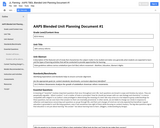
State guidelines address various antebellum (pre-Civil War) reform movement - Abolition, Education, Women's Rights
- Subject:
- History
- U.S. History
- Material Type:
- Lesson
- Provider:
- Michigan Virtual
- Author:
- JL Fleming
- Date Added:
- 09/19/2017

State guidelines address various antebellum (pre-Civil War) reform movement - Abolition, Education, Women's Rights
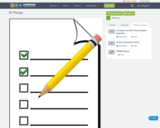
This lesson will allow students to select and share what details are important on a topic. Groups of students will research a topic and then discuss and determine the top 25 important things someone should know about the topic.
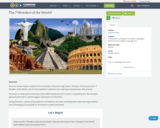
This is an online module created for the 3rd Grade of the Junior High School. The topic of the lesson is the "7 Wonders of the World", and its main emphasis is placed on the Listening comprehension skills practice.
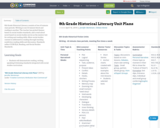
8th Grade Historical Literacy consists of two 43 minute class periods. Writing is one 43 minute block and reading is another. The teacher has picked themes based on social studies standards, and a read-aloud novel based on social studies serves as the mentor text for writing and reading skills. More social studies content is addressed in reading through teaching nonfiction reading skills and discussion.

In this three week unit, students will practice skills related to argumentative writing. They will ultimately write an argumentative/persuasive letter to the school board regarding school safety policy.
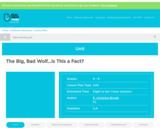
Reading is revamped in this lesson in which students use a multimedia approach to study the books by Seymour Simon.
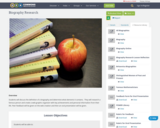
Students will discuss the definition of a biography and determine what elements it contains. They will research a famous person and create a web graphic organizer with key achievements and personal information from their life. Peer feedback will be given on the web creation and then an oral presentation will be given.
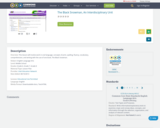
This lesson will involve work in oral language, concepts of print, spelling, fluency, vocabulary, comprehension, and writing with the use of one book, The Black Snowman.
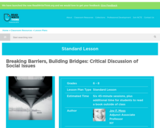
Through a series of picture book read-alouds, students engage in critical discussion of complex issues of race, class, and gender.
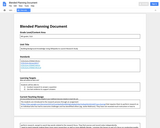
The students are introduced to the research process through an assignment (https://docs.google.com/document/d/1aV1canXyzEv0imNlA3VgYuAqXqJV4ax7xv0opIt4mtQ/edit?usp=sharing) that requires them to perform research on an individual who has had to overcome challenges and has benefitted others (eg. Jackie Robinson)
I want to work towards making them more savvy researchers as well as more digitally literate. I envision this lesson as part of a focus on conducting quality research. Another lesson, probably prior to this, would be on identifying credible sources of research. A follow-up lesson could easily be on performing effective web searches in research.
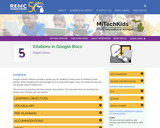
Google Scholar Citations provide a simple way for students to keep track of citations to their articles. When students are using Google Docs to write their papers, they can easily link and cite the articles used for references.
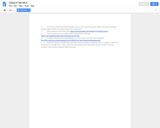
For this lesson, students will learn how to cite in-text in MLA. They will watch a video, be directed to an easy to understand web page with citation examples, and even be able to complete a worksheet on citing in-text in MLA. Once students are done with this lesson, they will be ready to cite in-text in their own research paper.
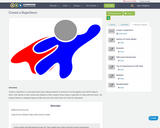
Create a Superhero is a five-part lesson plan asking students to research a current global issue which impacts them, their family or their community. Based on their research they create a superhero to help solve the issue. The project follows an adapted inquiry model and uses the online tools of G Suite for Education.
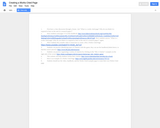
For this lesson students will learn how to create a Works Cited page in MLA. They will watch a video, play games, and read a handbook to learn the many steps and processes required in a Works Cited page.
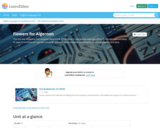
Students read literary and informational texts about knowledge and intelligence to understand what happens when humans try to manipulate the minds of others and how our understanding of intelligence has evolved over time. Students express their understanding of these ideas by exploring how authors draw on traditional stories and develop characters and themes to teach us about ourselves and others.
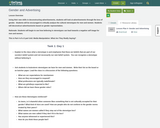
Using their new skills in deconstructing advertisements, students will look at advertisements through the lens of gender. Students will be encouraged to critically analyze the cultural stereotypes for men and women. Students will deconstruct advertisements based on gender representation.Rationale: Students will begin to see how believing in stereotypes can lead towards a negative self image for men and women. This is Part 4 of a 5 part Unit: Media Manipulation: What Are They Really Saying?
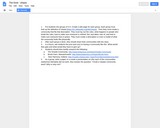
Before students read The Giver, students will be given the opportunity to create their own Utopian community. First they will learn what Utopia means. Then they will work in groups in a Wiki or through google docs to create their community. They will end the lesson by reading accounts of others who actually tried creating Utopian communities and write a paper on the communities.

This is the story of how Les Paul created the world's first solid-body electric guitar, countless other inventions that changed modern music, and one truly epic career in rock and roll. How to make a microphone? A broomstick, a cinderblock, a telephone, a radio. How to make an electric guitar? A record player's arm, a speaker, some tape. How to make a legendary inventor? A few tools, a lot of curiosity, and an endless faith in what is possible, this unforgettable biography will resonate with inventive readers young and old.
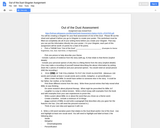
After students have read Out of the Dust, they will create a Glogster. They will write about the theme, use their vocabulary words in writing, write using similes, metaphors, and personification in poetry, compare and contrast Billie Jo's experience to someone else in history, and be able to pick an option from a list. They will use their creativity to make their poster appealing to the reader.
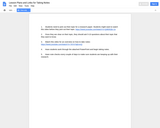
For this lesson, students will learn how to pick a topic for a research paper. They will then think of questions they want to answer in their research paper, and use those questions to guide what they take notes on. A detailed PowerPoint explains how to use PowerPoint to organize and take notes.